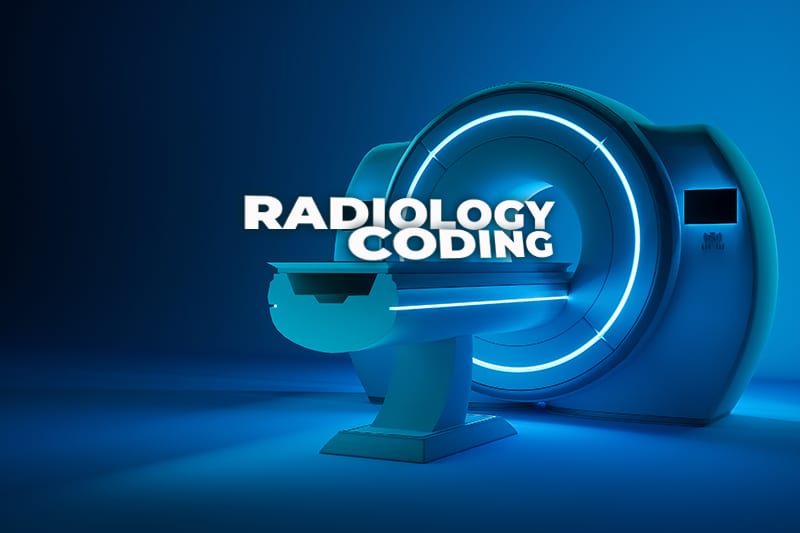Radiology imaging volume has expanded considerably. Radiology coding is an essential element of routine workflow such as ordering tests, scheduling, billing, and image interpretation. With the wide variety of imaging techniques, medical coding services are a practical way for providers to ensure correct use of radiology procedure codes. Compliance audits help ensure adherence to coding guidelines and avoid reimbursement issues.
Radiology Coding Audit Goals
Radiology coding is complex process. Basically, audits evaluate coding compliance by evaluating a sample of coded claims. Auditors evaluate clinical documentation and medical claims information and give feedback to providers and their coding team for risk mitigation and revenue cycle management. The main goals of radiology coding audits are to:
- Identify errors in clinical documentation
- Review quality of coding to ensure accuracy is met
- Identify areas of strengths and weaknesses
- Identify payer reimbursement issues
- Uncover fraudulent billing practices, whether intentional or unintentional
- Reveal undercoding, overcoding, unbundling and modifier use problems
- Educate practice providers on coding and billing
- Set up a quality assurance process
- Resolve areas of risk with the aim to avoid Recovery Audit Contractor (RAC) audits
- Maintain compliance with payer guidelines and federal and state regulations
By confirming that coding is being done correctly and identifying errors, coding audits help providers leverage data to improve the quality of patient care while improving compliance and reimbursement.
AAPC distinguishes between different types of radiology audits:
- ‘Focused’ and ‘random’: A focused audit involves evaluating one item or one type of service, one specialty, or one provider, etc. In a random audit, claims are selected for review at random.
- ‘Internal’ and ‘external’: Internal audits are done by the facility’s own staff; external audits are done by an outside party.
- ‘Prospective’ and ‘retrospective’: Prospective audits review claims before billing so that provider documentation or coding mistakes can be identified and corrected before claims submission. In a retrospective audit, claims are evaluated after billing to determine correct payer reimbursement and/or denials. If underpayment is identified, the claim will be reprocessed for proper payment. If the problem is overpayment, it will be returned to avoid penalties.
Steps in the Radiology Audit Process
There are many steps involved in the medical audit process which should be determined in the planning stage, notes MGMA. These basic steps, which also apply to radiology coding audits, are as follows:
- Identify the audit type and define areas in which the practice feels there may be higher volumes of errors or based on RAC reports defined by CMS.
- Determine the sample size and whether the audit will be prospective or retrospective.
- Fix a time period to select samples to audit, such as one week, one month, one quarter or an entire fiscal year.
- Select the number of claims to review.
- Assess accuracy of provider documentation to ensure adherence to policies and procedures.
- Track data using a spreadsheet or an electronic application which can present the information as a readable report.
- Present the findings and educate staff and providers on identified areas of opportunity for improvement, and then update policies and procedures accordingly.
- Follow up after the specified time and ensure quality assurance is in place.
Radiology Coding Audits – Essential Information to Verify
AAPC instructs that the following information should be verified when auditing radiology services:
- Patient demographics: Patient first and last name, date of birth, etc.
- Date of service (DOS) and time
- Indication/Reason for visit: Verify the reason for the visit and make sure the appropriate ICD-10-CM codes are assigned (refer to your payer policy such as a local coverage determination or national coverage determination, if necessary).
- Procedure header: Make sure that the procedure header supports the body of the report. For example, if the header supports a three-view X-ray, but the body of the report supports a four-view X-ray, AAPC recommends using the body of the documentation to support services billed.
- Techniques used: Verify the services (CT, MRI, etc) rendered, number of views, and with or without contrast.
- Procedure details: Check procedure details (image quality, limited or complete study, procedure complications, patient cooperation, recommendations, follow-up visit, etc.).
- Comparison studies: Review and compare the prior exam and previous images and reports with the current exam. Compare the details such as date, hospital, specialty provider details, reason for exam, etc.
- Findings/Impressions/Results: Make a summarized list of statements of the problem/condition (including features such as mass size, oval shape structure, etc) and result of the exam.
- Electronic signature: The signature should indicate “signed by” or “verified/reviewed by,” followed by provider name and professional designation.
- Supervision and interpretation: Ensure documentation substantiates the supervision and who provided the interpretation.
- Modifier use: Check modifier (Commonly used modifiers in radiology billing are 26, TC, 76, 77, 50, LT, RT, and 59).
In a radiology practice, considerable amounts of clinical documentation and medical claims information are generated on a daily basis. Professional support from a radiology medical coding company can ensure correct translation of clinical encounters into billable codes as well as thorough chart review to improve provider documentation and adherence to coding guidelines.




